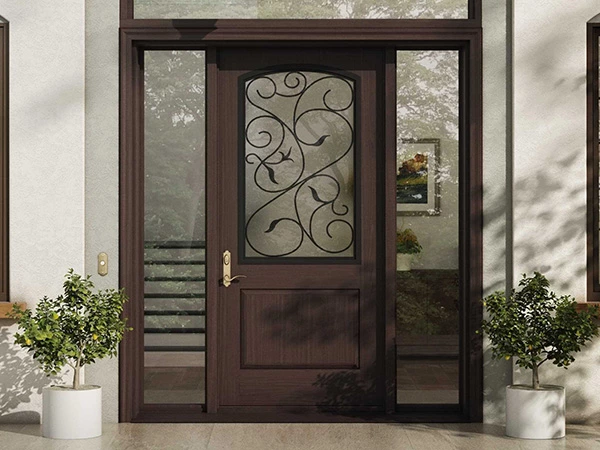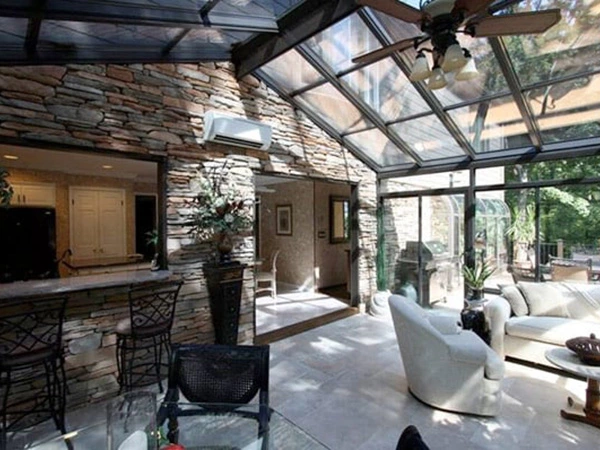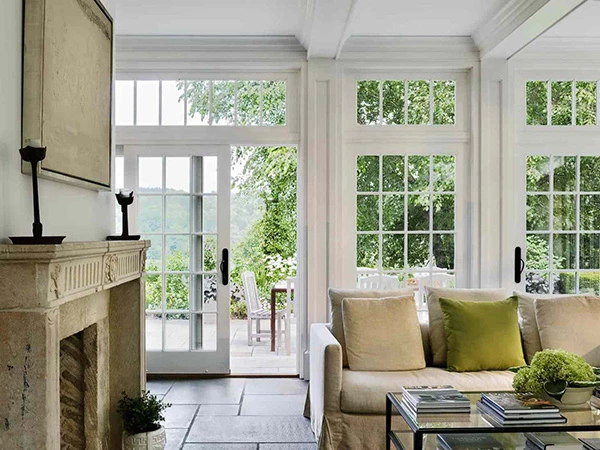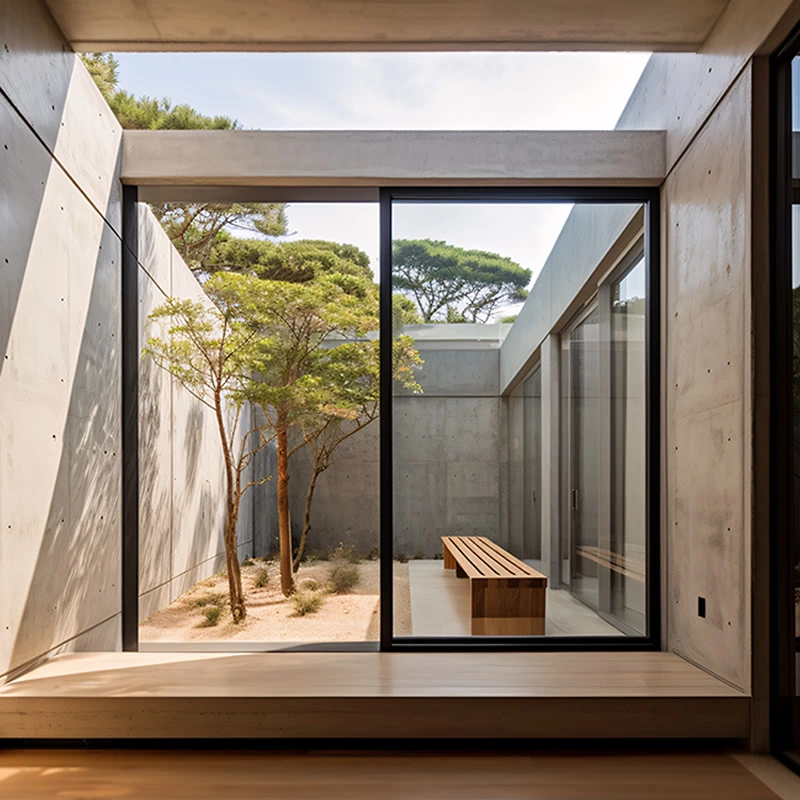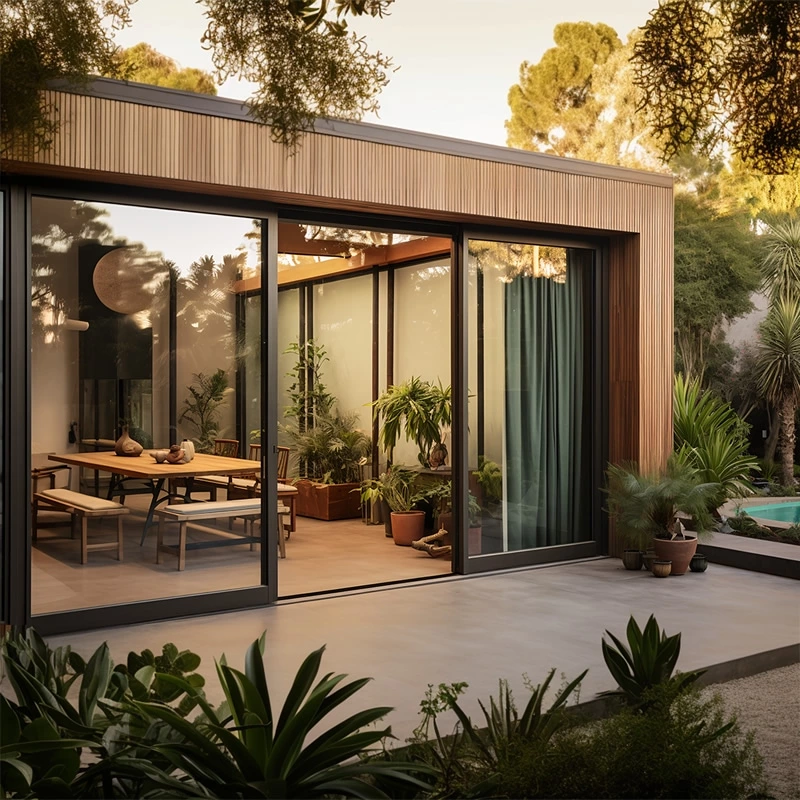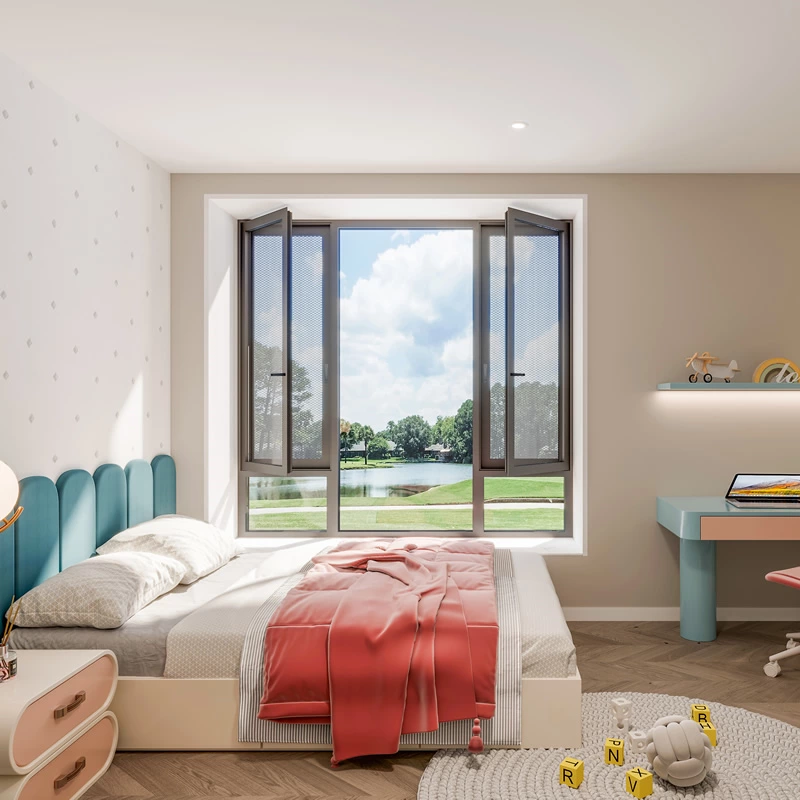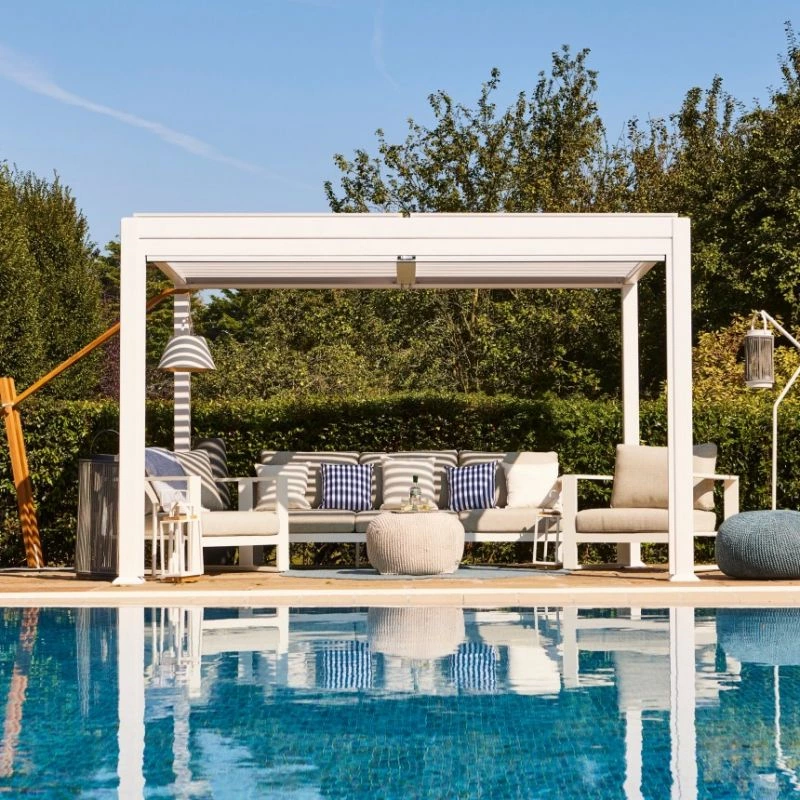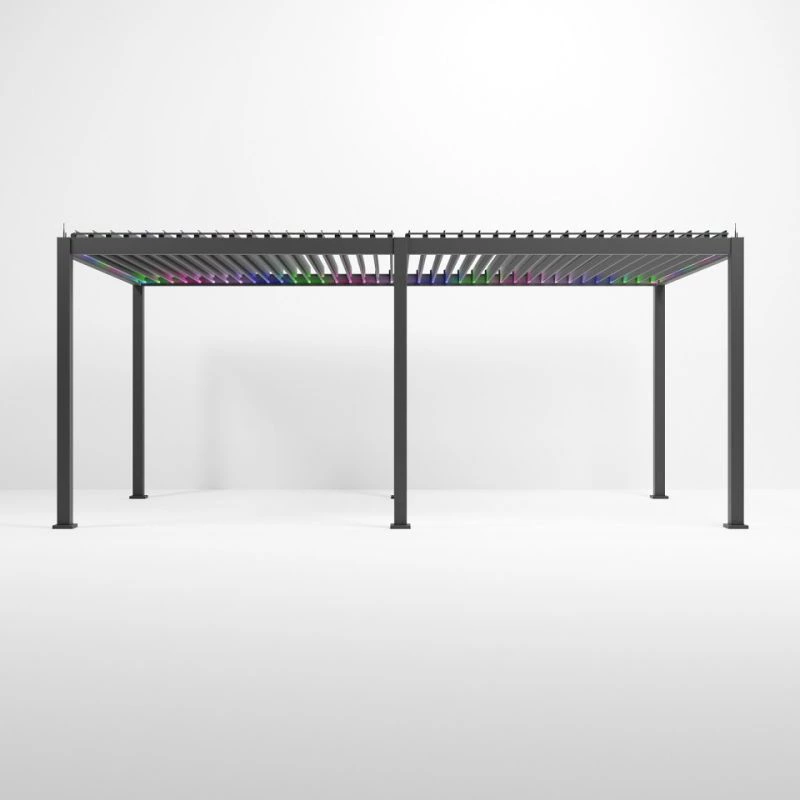Introduction
A sunroom offers a bright and comfortable living space, but once water starts leaking, it can severely impact usability and damage interior furnishings. Resolving this issue requires attention at every stage—from design and materials to construction and maintenance—especially in relation to proper slope design for both the roof and drainage systems.
Common Causes of Water Leakage
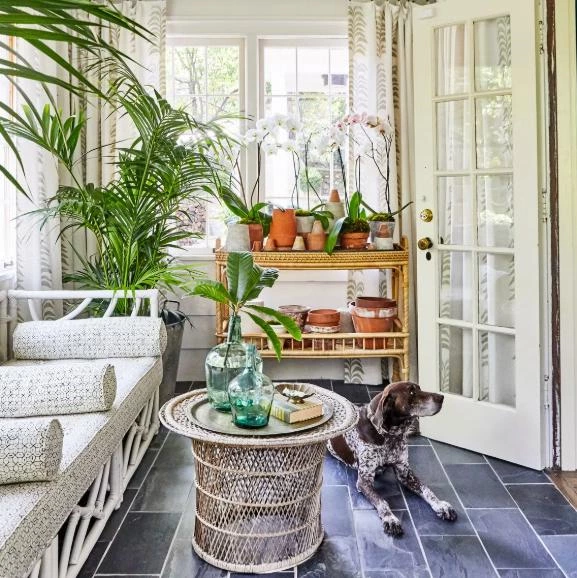
1. Improper Structural Design
(1)Roof Slope Too Flat or Too Steep
- Less than 3° (approx. 5%): Insufficient slope prevents rainwater from draining efficiently, causing water to accumulate at joints and seep inside.
- More than 12° (approx. 21%): Although steep slopes facilitate drainage, they may cause uneven stress at joints, leading to seal failure. They can also compromise aesthetics and raise construction costs.
- Recommended Range: 5°–10° (approx. 8.7%–17.6%): Ensures effective drainage, structural safety, and visual harmony.
(2)Inadequate Drainage Slope
- Minimum slope: 1% (approx. 0.57°) to allow rainwater to flow out without pooling.
- Recommended: 2%–4% (approx. 1.15°–2.29%) for open gutters; 1%–3% (approx. 0.57°–1.72%) for underground piping.
- Maximum slope: 10% (approx. 5.71%), to avoid erosion, excessive noise, and installation difficulties.
(3)0Lack of Waterproofing at Key Nodes
If structural joints (e.g., between aluminum framing and foundation or walls) lack waterproof barriers or expansion gaps, temperature-related expansion and contraction can lead to leaks.
2. Material and Sealing Issues
(1)Low-Quality Sealants or Weatherstrips
Substandard silicone sealants and EPDM strips degrade under UV exposure and temperature swings, losing elasticity and allowing water to penetrate.
(2)Insufficient Desiccant in Insulated Glass
Poor-quality or low-quantity desiccants cause condensation within glass units, leading to capillary leaks.
(3)Poor-Quality Roofing Panels
FRP panels thinner than 6 mm or lacking UV protection develop microcracks over time, especially under intense sunlight, increasing the risk of leakage.
3. Construction and Installation Flaws
(1)Inadequate Waterproofing at Hidden Joints
If only a single layer of sealant is applied without forming a triple defense (sealant → waterproof membrane → drainage slope), water can infiltrate vulnerable joints.
(2)Uneven Glass Installation
Misaligned panels cause uneven pressure on clamping strips, leading to gaps and leakage under water pressure.
(3)Improper Bolt and Screw Sealing
Fasteners penetrating frames need a full waterproofing system: primer, gasket, and sealant. Without these, water may seep through screw holes.
4. Climatic and Environmental Factors
(1)Heavy Rain or Typhoons
Blocked gutters during storms can cause water backflow; wind-driven rain may penetrate lower joints under pressure.
(2)Temperature Fluctuations
Frequent expansion and contraction due to heat and cold weakens seals over time, leading to cracks and eventual failure.
(3)UV Exposure
Prolonged sunlight accelerates aging of sealing materials like EPDM and PVC, reducing their functional lifespan.
5. Lack of Maintenance
(1)Clogged Gutters or Filters
Leaves, dust, and debris can block drainage systems, causing rainwater to overflow and seep back into the sunroom.
(2)Aging Sealants and Weatherstrips
Neutral silicone sealants typically require replacement every 2–3 years, and EPDM weatherstrips every 3–5 years. Beyond their lifespan, sealing efficiency drops significantly.
(3)Unassessed Wind Pressure Changes
Modifying the structure or adding ventilation without recalculating wind resistance can lead to structural stress and leaks during high winds.
Practical Solutions
1. Optimize Structural and Drainage Design
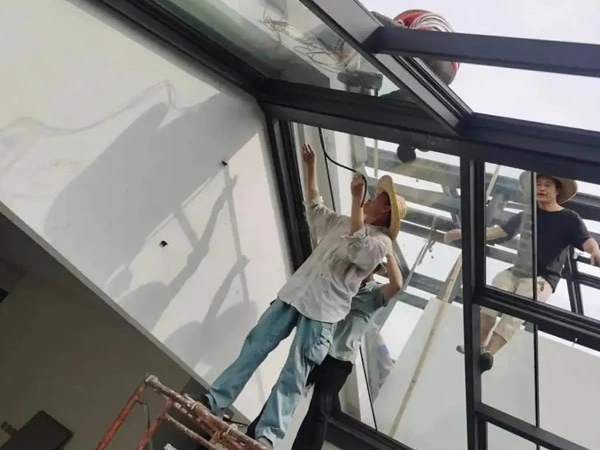
(1)Maintain a roof slope of 5°–10° (approx. 8.7%–17.6%) to ensure efficient water runoff.
(2)Design drainage systems with the following guidelines:
- Open gutters: minimum 1%, recommended 2%–4%
- Underground pipes: minimum 1%, recommended 1%–3%
- Avoid slopes over 10% to prevent runoff issues and installation challenges.
(3)Use appropriately sized gutters and downpipes (≥80 mm in diameter), and install overflow holes and debris filters to reduce clogging.
(4)Ensure Waterproofing at Critical Joints
Apply self-adhesive waterproof membranes and install water-blocking layers where framing meets walls or floors to create a triple protection system.
2. Use High-Performance Materials
(1)Choose neutral silicone sealants with strong weather resistance and long service life (up to 10 years).
(2)Select EPDM weatherstrips that remain elastic in temperatures from –40°C to 120°C.
(3)Ensure insulated glass units contain ≥100 g/m³ of desiccant.
(4)Use FRP panels ≥6 mm thick, with UV-resistant coatings.
3. Adhere to Proper Construction Standards
(1)Follow detailed technical drawings and install a three-layer waterproofing system at all major joints.
(2)Apply primer, waterproof gaskets, and sealant on all fasteners penetrating the frame.
(3)Level and align all glass panels, then perform water tests after installation to confirm leak-free performance.
4. Adapt to Local Climate
(1)In high-rain regions: Use steeper roof slopes (8°–12°), install overflow channels, and increase joint strength.
(2)In snowy areas: Maintain slopes of 8°–12°, add snow guards, and clear accumulated snow promptly.
(3)For UV and temperature variations: Incorporate expansion joints and select materials with UV resistance and high-temperature tolerance.
5. Maintain and Inspect Regularly
(1)Seasonal Checks: Clean gutters and filters before and after rainy seasons; inspect and repair seals promptly.
(2)Replacement Schedule: Replace sealants every 2–3 years and weatherstrips every 3–5 years.
(3)Leak Documentation: Track leak locations and remedies to assist with long-term maintenance.
Conclusion
Water leakage in sunrooms is typically the result of multiple interacting factors—design flaws, poor material selection, construction errors, environmental stressors, and neglect. Among these, roof and drainage slopes are especially critical: the roof should be sloped 5°–10°, and drainage systems should maintain a 1%–5% slope to ensure optimal water management.
By optimizing structure and drainage, selecting weather-resistant materials, enforcing rigorous construction standards, and conducting regular maintenance, homeowners can minimize the risk of water infiltration and enjoy a sunroom that remains bright, dry, and comfortable year-round.
